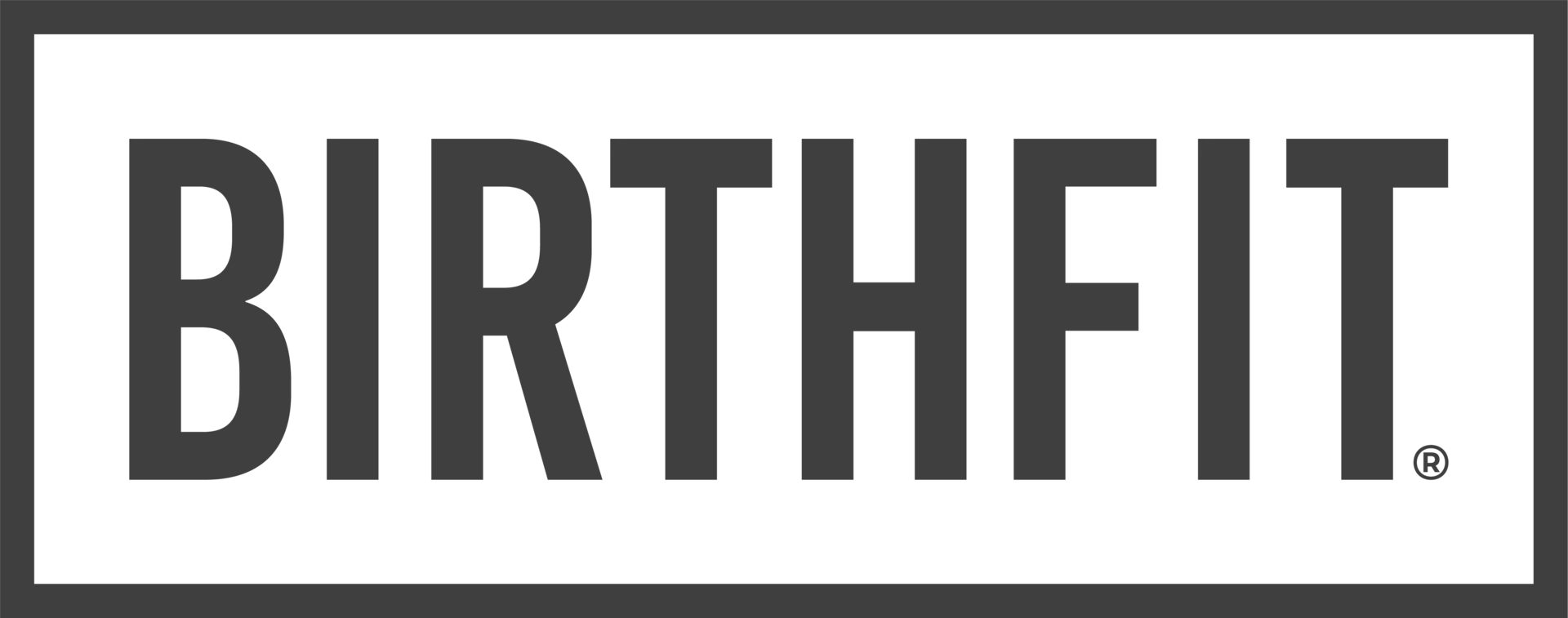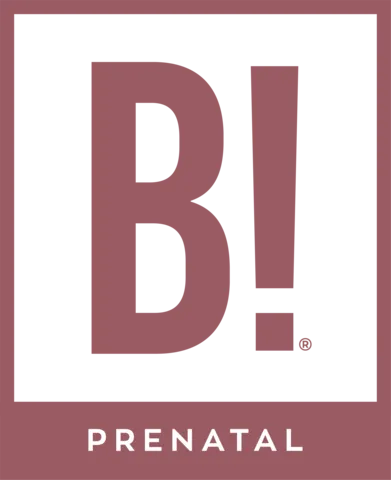In BIRTHFIT training, we love deadlifts.
You may hear us say that the “squat is king” for so many obvious and valid reasons. I would go on to say that the “deadlift is queen” and equally as important to maintaining functionality throughout all stages of life. As tiny humans, we master the squat first in our journey to a biped life. It’s not long before we start discovering how to lift objects off the ground. What’s interesting is that in these early days of development, the deadlift is generally executed with beautiful posture and mechanics. Hello innate movement patterns! The deadlift is great for many reasons, but only when performed properly. Unfortunately, this lift often gets negative attention due to lower back injuries caused by poor form.
Why Deadlift?
The deadlift is a functional movement that we use in everyday life. Think about how many times a day we use the hip hinge to pick things up. It is a complex movement that builds strength, reinforces core stability, and can be used as a tool for both injury prevention and rehabilitation. It has demands on the entire posterior chain, including many back muscles, spine stabilizers, glutes, and hamstrings. While gripping the barbell our forearms, traps, and lats are also engaged and the muscle recruitment doesn’t end there. When we set up for a proper deadlift, we are bracing the core system, establishing IAP (intra abdominal pressure), and recruiting all core musculature from the chest down to the pelvic floor. Just about every muscle that is trained in this lift is an important part of functionality in everyday movement. This also plays a key role in maintaining a healthy posture.
Deadlifts in the Motherhood Transition
In the motherhood transition, we focus on the importance of training with intention. Whether you are preparing to conceive, are pregnant, or are postpartum, there should be meaning behind the way that you train. In a typical BIRTHFIT program you will see variations including conventional deadlifts, sumo stance deadlifts, banded deadlifts, romanian deadlifts, deficit deadlifts, deadlifts from blocks, and single leg deadlifts. There is a time for each variation, but when we approach lifting in the motherhood transition there needs to be consistency behind our set up and technique. In the gym you may see lifters using all sorts of tools and techniques for lifting, including shoes, belts, wrist wraps and straps, and grip variations. Again, there may be a time and place for such tools for different athletes, but not typically during the motherhood transition. We want to consistently train smart with intention and aim for quality movement. We don’t shoot for personal records during this time; we rather only approach lifts that we know we can make. One beautiful part of this season of training is the ability to return to the basics and polish up our skills and quality of movement. There is always time later to return to max efforts and when that time comes, if you are patient within the transition, you may be surprised at what your new postpartum body is capable of.
The Set Up and Execution
Consistency is important when training because you can build healthy habits to avoid injury without having to think about it too hard. When setting up for a deadlift, specifically, there are a few things to think about. Before you approach the barbell you want to make it a habit to set your posture and engage the core. Many lifters like to use belts to help with this, but we won’t be using belts. With a neutral spine, start with a deep diaphragmatic breath, filling your core 360 degrees around your entire trunk. In DNS terms we call this “filling the canister”. This will facilitate IAP, stabilizing the entire core. Next, with vertical shins close to the barbell, you will hinge at the hips, maintaining a neutral spine and a forward-facing chest. For a conventional deadlift feet are generally hip width apart. Shoulders are directly over the bar and tightly engaged along with the pecs, lats and rest of the trunk. With a double overhand grip just outside of the legs (for a conventional deadlift) you will grip the earth with your feet and drive your heels pushing the barbell away from the ground, keeping it close to your midline. With fluid movement, there is a full hip extension at the top of the lift and then a controlled descent back down until the barbell meets the ground. Also remember to maintain a neutral spine from start to finish. People often tend to lean back at the top of the lift to exaggerate a locked out full extension. This can put pressure on the lower back. It also compromises the ability to create task specific intra abdominal pressure. You should also avoid hyperextension of the neck when trying to pull and the common unnecessary shoulder shrug at the top. The deadlift pull should stop with a neutral spine and open hips, thus no need to hyperextend. The BIRTHFIT YouTube Channel has a great video to help walk you through this movement.
Lifting Gear
If you have been training for a while before your motherhood transition, you may have been introduced to all sorts of gear and tools for each lift. As far as shoes go, aim for a simple shoe with a minimal sole, or even the sole that nature provided you. A belt is obviously not going to work over a growing belly. Pregnant or not, in this season we won’t be attempting maximum lifts. If you are used to relying on a belt for lifting, this is a great time to create new habits and instead rely on your natural stabilizing system within your core. A properly executed brace will be just as effective as a belt. In BIRTHFIT programming we focus on training the core from warm-up to cool down and it all starts with breath. It is so important to understand IAP before adding load.
For now forget about all the tools and gadgets and remember slow is fast. Mastering the basics will set you up for success in the long run.
Lifting styles and techniques
You may have been exposed to certain lifting styles and techniques that potentially have become habits of your own. One common practice during deadlifts is the use of a mixed grip. This involves one hand pronated over the barbell while the other is supinated. The reason why experienced lifters use this technique is to increase grip strength. With a mixed grip your barbell is less likely to slip out from your fingers during the pull. This can be very useful when attempting a maximum effort lift. A problem with the mixed grip is it can contribute to imbalance, and also can create a more vulnerable situation between the elbow, biceps tendon, and shoulder of the supinated side. You can alternate the mixed grip with each rep, which helps with balance, but ultimately your body isn’t designed to perform such a complex full body movement with one half of your body in external rotation and one half in internal rotation. In this position you have different muscles turning on from one side to the other. There is so much more to be gained with the double overhand pronated grip. It’s amazing how important grip strength is and how it transfers to overall strength.
Another common practice you may see is when an athlete drops the barbell from the top of the deadlift, eliminating the eccentric portion of the lift. This has become a common practice mainly with high volume reps in a workout. It can be very easy to injure yourself in the eccentric portion, if you are in a rush and relinquish control coming back down. If it’s too difficult for you to lower with control, you may be going too heavy. There are tremendous strength gains that you are missing when you drop from the top. If you know anything about Triphasic Training, you understand the value in each part of the lift, especially the lowering or eccentric phase.
When you are training with intention, you want to choose movements that will improve your overall strength while minimizing the risk of injury. Consider your ‘why’ when training during the motherhood transition. Competition is off the table right now and maximum efforts are for another time.
We want to maintain a quality of life while continuing to build strength while we prepare for what life has in store for us.
The deadlift is a powerful training tool that carries value both in and out of the gym. With a solid deadlift you are going to gain strength in general, but also are likely to be better at other movements that involve grip strength and/or the hip hinge. Outside of the gym, it allows for a nice stable core and strong back, along with body mechanics that decrease your chances of injury (like throwing out your back while lifting a bag of dog food). When you are aware of your form and posture while in the gym, you will notice that you tend to purposefully use this form and posture when picking up your child or placing something heavy onto the ground. Have fun in the gym, but don’t ignore deadlift day. If you ever need any assistance with form or modifications for whichever season you are in, reach out to your nearest BIRTHFIT Coach.
Brooke Tompkins
birthfitsouthtampa@gmail.com
BIRTHFIT Coach
@birthfit_southtampa
Get Started
Effective programs for both MIND ⊕ BODY
This is a general strength and conditioning program for women in all seasons and cycles of life. You receive four workouts each week with options for those with limited equipment and variations on movements.
Start moving and training with your cycle ❤︎
Slow is Fast when you heal your core and pelvic floor from the inside out by starting with breath work, natural movement patterns, and continue to progressively build upon a solid foundation. The number one referral for doctors and midwives.
Are you open to conception? Join us in B! Community training. A general strength and conditioning for women that train while honoring their menstrual cycle. Everyone is in a different part of their journey, we support you where you are.
Do Pregnancy Different, when you connect with your body daily through a safe, effective prenatal training program for all levels and all fitness backgrounds that includes core and pelvic floor prehab, mobility, strength, and conditioning.





